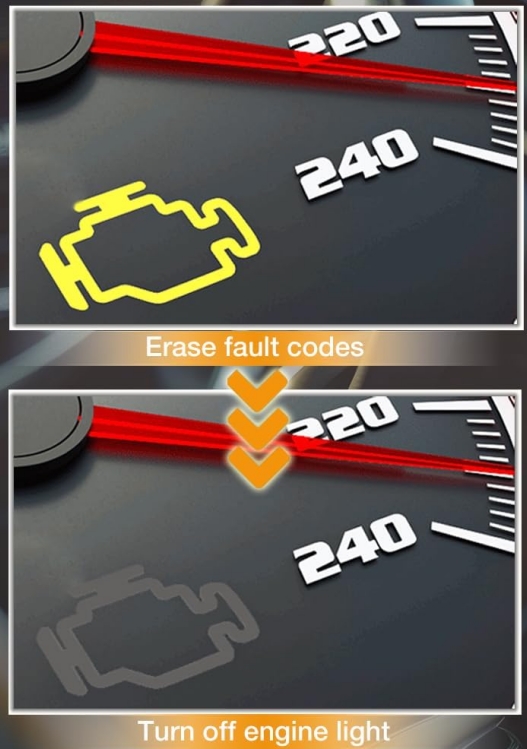Dashboard appears MIL ?
1. What is MIL (Malfunction Indicator Lamp) Function ?
The MIL, commonly called the “Check Engine Light,” is a dashboard warning light mandated by OBD2 standards.
It illuminates when the vehicle’s Engine Control Unit (ECU) detects a fault affecting emissions, engine performance, or critical systems. Two states indicate severity:
- Steady Illumination: A non-critical but persistent issue (e.g., oxygen sensor degradation).
- Flashing: A severe, immediate threat (e.g., catalytic converter damage from misfires).
2. Common Causes of MIL Activation
Faults triggering the MIL often relate to emissions or engine efficiency, such as:
- Sensor failures (e.g., oxygen sensor, MAF, throttle position sensor).
- Emission control issues (e.g., faulty catalytic converter, EVAP leaks).
- Ignition/misfire problems (e.g., spark plugs, fuel injectors).
- System electrical faults (e.g., wiring, ECU communication errors).
3. Diagnostic Data and Codes
- Diagnostic Trouble Codes (DTCs): Standardized codes (e.g., P0171, P0300) pinpoint the fault’s origin.
- Live Data Stream: Real-time sensor/parameter readings (e.g., RPM, fuel trim, sensor voltages).
4. Utility for Stakeholders
- For Vehicle Owners:
- Awareness: MIL alerts to potential safety/emissions risks, avoiding costly repairs or failed inspections.
- Basic Guidance: Generic DTCs (e.g., P0420) help owners understand urgency (e.g., “Catalyst Efficiency Below Threshold”).
- For Technicians:
- Targeted Repairs: DTCs narrow diagnostic scope (e.g., P0301 = Cylinder 1 misfire).
- Data-Driven Analysis: Live data (e.g., fuel trim percentages, O2 sensor waveforms) identifies intermittent issues or component degradation.
- Emission Compliance: Ensures repairs meet regulatory standards.
5. Key Takeaway
The MIL and OBD2 data bridge owner awareness and technical action. Owners gain early warnings, while technicians leverage codes and live data for efficient, accurate repairs, minimizing downtime and emissions risks.
Post time: May-15-2025











